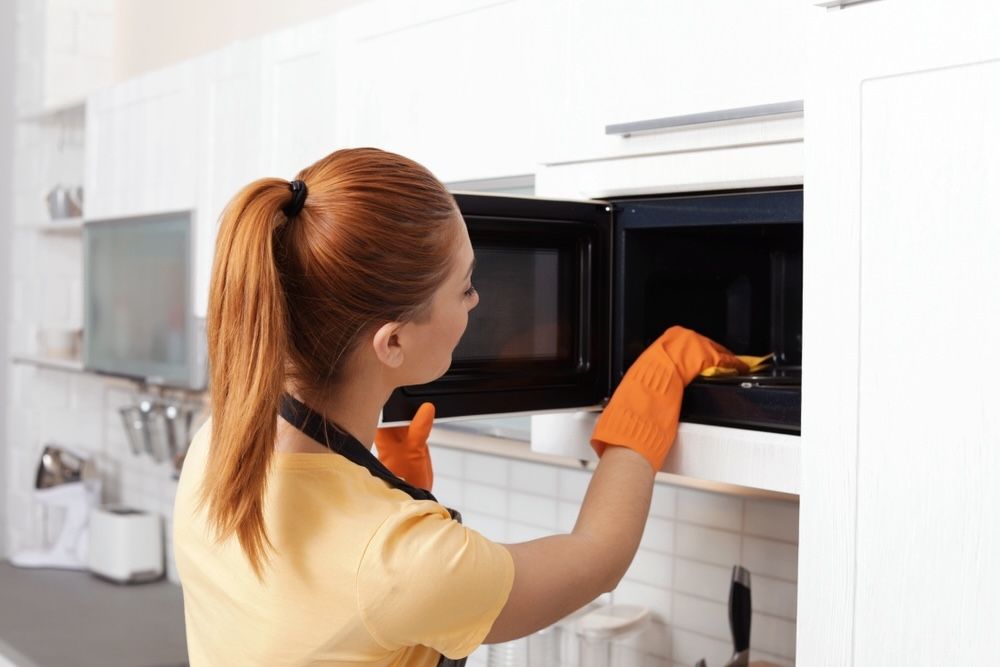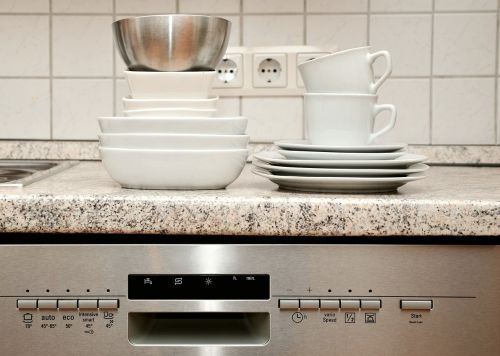How to Clean and Maintain Your Microwave

The microwave is an indispensable kitchen appliance, providing unparalleled convenience for quick meals and reheating leftovers. However, its regular use can lead to the inevitable buildup of food splatters, grease, and persistent odors, which can significantly affect its performance and overall hygiene. In this detailed guide, we will delve deeply into the best practices for cleaning and maintaining your microwave, ensuring it stays in top shape and operates with maximum efficiency.
Maintaining a clean and well-functioning microwave is essential for both hygiene and efficiency in your kitchen. By following these comprehensive cleaning and maintenance tips, you can extend the life of your microwave and ensure it continues to serve you well for years to come. Regular attention to this often-overlooked appliance will make your kitchen a more pleasant and sanitary place to prepare meals. Implementing these practices not only enhances the performance of your microwave but also contributes to a healthier and more efficient cooking environment.

Why Cleaning Your Microwave Matters
Hygiene: Regular cleaning of your microwave is crucial for maintaining a high level of hygiene in your kitchen. Food residues left inside can become breeding grounds for bacteria and mold, which can pose health risks to you and your family. Keeping the interior of your microwave clean prevents these harmful microorganisms from proliferating, ensuring that the food you heat up or cook remains safe to consume.
Performance: A clean microwave is an efficient microwave. Over time, accumulated dirt and grime can interfere with the appliance’s heating capabilities, leading to uneven cooking or longer cooking times. By regularly cleaning your microwave, you ensure that it operates at its optimal performance level. This not only saves time but also ensures that your food is heated evenly and thoroughly.
Odor Control: Unpleasant odors in your microwave can transfer to the food you cook, affecting its taste and smell. Food splatters and spills that are not promptly cleaned can lead to lingering smells that are hard to eliminate. Regular cleaning helps prevent these odors from developing and keeps your microwave smelling fresh.
Safety: Regular maintenance of your microwave reduces the risk of fires caused by food debris overheating. Food particles left inside can catch fire if they are exposed to high temperatures for too long. By keeping your microwave clean, you minimize this risk, making your kitchen a safer place to cook.

Step-by-Step Cleaning Process
Gather Your Supplies: Before you begin cleaning your microwave, it’s important to gather all the necessary supplies. You will need mild dish soap or vinegar, baking soda (optional), a microwave-safe bowl, a sponge or microfiber cloth, water, and a toothbrush or small scrubbing brush. Having these supplies on hand will make the cleaning process more efficient and effective.
Pre-Cleaning Preparation: Start by unplugging the microwave to ensure your safety. This is an important step that should not be overlooked. Next, remove the turntable and any other removable parts. These parts can usually be washed separately in warm, soapy water. Make sure to dry them thoroughly before placing them back in the microwave.
Steam Cleaning: Steam cleaning is an effective method for loosening dried-on food and grime inside the microwave. Fill a microwave-safe bowl with water and add a few tablespoons of vinegar or a squeeze of lemon juice. Place the bowl inside the microwave and run it on high for 5 minutes. The steam will help soften and loosen any stubborn food particles, making them easier to wipe away. After the cycle is complete, let the bowl sit for a few minutes to cool down before carefully removing it.
Wipe Down the Interior: Using a damp sponge or microfiber cloth, wipe down the interior walls, ceiling, and floor of the microwave. Pay special attention to areas where food splatters are most common, such as the roof and the back wall. For stubborn spots, dip the sponge in a mixture of baking soda and water to create a gentle abrasive paste. Scrub gently to avoid scratching the interior surface, then wipe clean with a damp cloth to remove any residue.
Clean the Door and Seals: The microwave door and seals can accumulate grime and food particles over time. Wipe down the door, both inside and out, using a damp cloth. Pay attention to the edges and seals, where dirt can easily build up. Use a toothbrush or small scrubbing brush dipped in soapy water to clean around the seals thoroughly. This ensures that the door closes properly and maintains a tight seal, which is essential for efficient operation.
Deodorize: To eliminate lingering odors, leave the microwave door open for a few hours after cleaning. This allows fresh air to circulate inside, helping to dissipate any remaining smells. Alternatively, place a bowl of baking soda inside the microwave and let it sit overnight. Baking soda is a natural deodorizer and will absorb any unpleasant odors, leaving your microwave smelling fresh.
Exterior Cleaning: Don’t forget to clean the exterior of your microwave. Wipe down the outside with a damp cloth to remove dust and fingerprints. Avoid using harsh chemicals that can damage the finish. Pay special attention to the control panel, gently cleaning it with a slightly damp cloth to prevent moisture from seeping into the buttons. This helps keep the microwave looking clean and well-maintained.

Maintenance Tips for Longevity
Cover Food: Using a microwave-safe cover to prevent food splatters and spills is one of the simplest yet most effective ways to keep your microwave clean. Covers can catch the food particles that would otherwise end up on the walls and ceiling of the microwave. This not only reduces the need for frequent cleaning but also helps in maintaining the appliance in good condition for a longer period.
Wipe Spills Immediately: When spills or splatters occur, clean them up as soon as possible. Fresh spills are much easier to clean than dried-on food, which can become stubborn and difficult to remove. Keeping a cloth or paper towel handy for quick cleanups can make a big difference in maintaining your microwave’s cleanliness.
Regular Deep Cleaning: In addition to routine cleanups, perform a thorough deep cleaning at least once a month. This involves removing and cleaning the turntable, steaming the interior, and scrubbing any hard-to-reach areas. Regular deep cleaning ensures that no food particles or grime build up over time, keeping your microwave in optimal condition.
Check for Damage: Regularly inspect your microwave for signs of wear and tear, such as damaged seals or a malfunctioning turntable. Addressing these issues promptly can prevent further damage and ensure the microwave continues to function efficiently. Damaged seals can lead to heat loss, affecting the microwave’s performance and efficiency.
Use Appropriate Containers: Always use microwave-safe containers to avoid damage to the microwave and ensure food safety. Containers that are not labeled as microwave-safe can release harmful chemicals when heated, and some materials can even catch fire. Using the right containers helps in preventing accidents and maintaining the integrity of your microwave.

Pro Tip: Cleaning Your Microwave with Water and Lemon
Materials Needed:
1 lemon
1 cup of water
Microwave-safe bowl
Sponge or microfiber cloth
Instructions:
Preparation:
Cut the lemon in half and squeeze the juice into a microwave-safe bowl.
Place the lemon halves into the bowl.
Add 1 cup of water to the bowl.
Microwave:
Place the bowl in the microwave.
Heat on high for 3-5 minutes, or until the water boils and creates steam inside the microwave. The steam will help to loosen any food splatters and grime.
Let it Sit:
After the microwave stops, leave the door closed for a few minutes to allow the steam to work its magic on the interior surfaces.
Cleaning:
Carefully remove the bowl (it will be hot).
Use a sponge or microfiber cloth to wipe down the inside of the microwave. The loosened grime should come off easily.
Wipe down the door and any crevices where dirt might accumulate.
Finishing Touches:
For stubborn spots, dip the sponge in the lemon-water mixture and scrub gently.
Dry the interior with a clean cloth.
This method not only cleans effectively but also leaves a pleasant, natural lemon scent in your microwave.
Topics
Check more articles on our blog

Maintaining Your Washing Machine: Tips for Longevity and Efficiency

How To Clean Stainless Steel Appliances With Natural Ingredients?

How to Clean and Maintain Your Microwave
